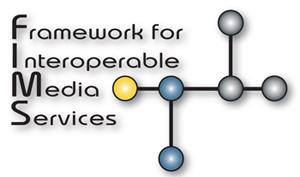SOA: Are We There Yet?

Admiral David Glasgow Farragut said, "Damn the torpedoes! Full speed ahead!" which describes well how I think the industry has been feeling about the continued rapid and positive developments surrounding Service Oriented Architecture (SOA) in media. With so many things happening I thought it to be a good time to give an update.
We are seeing more and more vendors adopting SOA principles in their products. I have seen dozens of new products in just the past few months that have developed service oriented interfaces. This now goes beyond the media asset management and automation categories that had been early adopters. Editing products, transcode, and even audio processing technologies are now touting SOA in their product specs. To be sure, the degree to which this is marketing hype versus real changes in the products remains to be seen, but it is a welcome development.

More and more media companies have projects going on that are using SOA principles in the design and implementation in the media systems. I believe that every major studio has done or is doing projects involving media with SOA. A new development is the number of broadcast organizations that are also heading down the path. While I can't say all, it is only a very small number of the world's major broadcasters that I haven't heard are doing something at this point.
THE FIMS EFFORT
There has also been very real progress with standardizations efforts around services. The AMWA/EBU effort to create a Framework for Interoperable Media Services (FIMS) is moving quickly with new companies joining the effort nearly every week. The latest details about FIMS activities can be seen at wiki.amwa.tv/ebu. The group has completed the third major revision of the draft framework and expects to release the first version of the framework specification around June 2011. They have also drafted detailed service definitions for three initial services—media ingest, media move and media transform. These are expected to be formalized soon after the release of the framework with many more to follow during the rest of this year and next.
The FIMS group is also planning a practical demonstration of the specification at the NAB Show. This will be shown at Booth N3134 and is supported by numerous vendors. I hope attendees at the show will take the time to visit and see several media services working from different vendors with common interfaces. Additionally, these will be run on different Enterprise Service Bus products as well!
In addition to the FIMS effort being open to all interested parties regardless of whether they are EBU or AMWA members, the group has opened a "user group" on Linkedin.com (SOA-FIMS User Group) to discuss progress as well as allow feedback about future directions.
THE NEW 34CS COMMITTEE
SMPTE has recently refocused its standards activities with three new Technology Committees and I have been asked by the new SMPTE engineering vice president to chair one of the new committees called "34CS—Media Systems Control and Services," along with Chris Simons of Harris. The scope of this committee is to examine "the implementation of media services, methods of managing and controlling hardware devices and software systems, and the management of media workflow processes, including associated signaling and control mechanisms."
This committee will initially take on the ongoing development of the BXF standard. Ultimately, it is expected that 34CS will likely take on the due process standardization of the FIMS effort. It may take on other control standards such as new real-time machine control protocols over IP. I am very excited that SMPTE has recognized the importance of this area in media systems and has dedicated a technology committee to them.
The change you can predict often takes longer to arrive than you expect; it is the things you don't expect that arrive quickly and out of nowhere. While I expected slow and continuous adoption of SOA in media over many years, I have been surprised by the explosion of interest and activity since the beginning of the year. It seems people are really beginning to understand the value of SOA in systems design and management and are putting it to practice now.
Woody Allen said, "It is impossible to travel faster than the speed of light, and certainly not desirable, as one's hat keeps blowing off."
Certainly we should be careful as we continue to speed down the path in these efforts. We don't want to create standards that are so narrow as to be inflexible for real world situations and therefore are not used. Nor ones that are so broad that they are not really interoperable. I feel confident, however, that as more players in the industry adopt service-oriented principles that we will see plenty of positive progress towards appropriate standards. You can Count on IT!
John Footen is an independent media technology and operations consultant. He is also co-author of the book "Service-Oriented Media Enterprise." He can be reached at jfooten@footen.tv.
Get the TV Tech Newsletter
The professional video industry's #1 source for news, trends and product and tech information. Sign up below.
